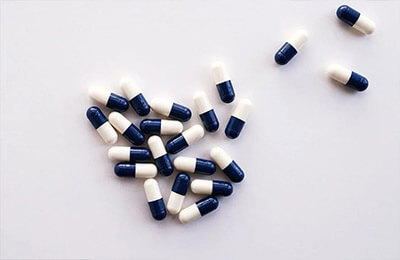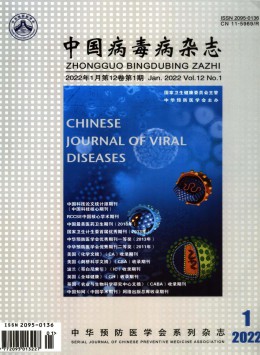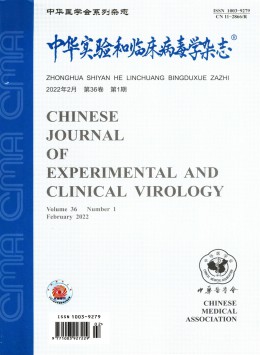抗病毒藥物精選(九篇)
前言:一篇好文章的誕生,需要你不斷地搜集資料、整理思路,本站小編為你收集了豐富的抗病毒藥物主題范文,僅供參考,歡迎閱讀并收藏。

第1篇:抗病毒藥物范文
摘要: 目前臨床應用的抗病毒藥物達40多種,為病毒引起的疾病的治療發揮了重大作用。與臨床其他抗感染藥物一樣,抗病毒藥物長期應用易產生耐藥性,降低療效,成為臨床治療及新藥開發的重要問題。本文就抗艾滋病毒藥物、抗乙型肝炎病毒藥物、抗流感病毒藥物及抗皰疹病毒藥物耐藥性及耐藥機制研究進行綜述。
關鍵詞: 抗病毒藥; 耐藥性; 耐藥機制
Advances in antiviral drug resistance and resistance mechanisms
ABSTRACT There are more than 40 antivirus drugs in the clinical use, which have played very important role in the treatment of viral diseases. Like other kind of antiinfection drugs, antivirus drugs can also induce resistance in longtime use that results the reducing of therapeutic efficacy and becoming a very tough problem in the clinical treatment and the development of new drugs. This paper briefly reviewed the recent advances in resistance and resistance mechanisms of antiHIV drugs, antiHBV drugs, antiinfluenza drugs and antiHSV drugs.
KEY WORDS Antivirus drugs; Resistance; Resistance mechanisms
病毒性傳染病居傳染病之首(占60%以上),發病率高、傳播快,對人類健康形成莫大的威脅。如艾滋病(AIDS)、重癥急性呼吸系統綜合征(SARS),各種病毒性肝炎、流行性出血熱、流感、感冒、嬰幼兒病毒性肺炎、成人腹瀉、病毒性心肌炎等等。近20年來,尤其是20世紀90年代,抗病毒藥物發展突飛猛進,目前在臨床應用的抗病毒藥物達40多種[1],為治療病毒引起的感染發揮了重大作用。與臨床其他抗感染藥物一樣,抗病毒藥物長期應用易產生耐藥性,降低療效,病情復發,成為臨床治療及新藥開發的重要問題。本文就各類臨床應用抗病毒藥物耐藥性及耐藥機制研究進展介紹如下。
1 抗艾滋病藥
1.1 抗艾滋病藥的作用靶點[2]艾滋病毒(HIV)復制過程中有三個由病毒基因編碼的復制關鍵酶,即逆轉錄酶(reverse transcriptase,RT)、蛋白酶(protease,PR)及整合酶(integrase),它們均為發展抗艾滋病毒藥物的重要靶點。目前上市抗HIV品種有21個,針對前兩個酶的抗艾滋病毒藥物可分為核苷類逆轉錄酶抑制劑,非核苷類逆轉錄酶抑制劑及蛋白酶抑制劑三類。第四類為HIV入胞抑制藥。
1.2 核苷類逆轉錄酶抑制劑(nucleoside reverse transcriptase inhibitor,NRTI)耐藥性及耐藥機制屬于NRTI的抗艾滋病毒藥物共有8個品種,即齊多夫定(zidovudine,AZT)、去羥肌苷(didanosine,ddI)、扎西他濱(zalcitabine,ddC)、司他夫定(stavudine,d4T)、拉米夫定(lamivudine,3TC)、阿巴卡韋(abacavir,ABC)、富馬酸替諾福韋酯(tenofovir DF,TDF)、恩曲他濱(emtricitabine,FTC)。NRTIs均為DNA合成天然底物的衍生物,AZT及d4T為脫氧胸苷的類似物,ddC、3TC及FTC為脫氧胞苷的類似物,ddI及tenofovir DF為脫氧腺苷及開環脫氧腺苷酸的類似物,ABC為脫氧鳥苷的類似物,它們均需在細胞內轉化為活性三磷酸或二磷酸衍生物,才能發揮抑制HIV1 RT作用。它們全部是HIV1 RT底物的競爭性抑制劑,抑制RT活性,阻礙前病毒DNA合成;并由于在結構上3′位缺乏羥基,當它們結合到前病毒DNA鏈的3′末端時,不能再進行5′3′磷酸二酯鍵的結合,終止了病毒DNA鏈的延長,又為鏈末端終止劑。通過上述作用機制,抑制HIV復制。它們與HIV1 RT親和力遠比與細胞內正常DNA聚合酶親和力強,因此具有一定的治療指數。艾滋病的治療采用聯合用藥,即高效抗逆轉錄病毒療法(highly active antiretroviral therapy,HAART)。耐藥突變[3]可分為基因型突變(genotype)及表型突變(phenotype),基因型突變并不一定有表型突變,臨床需分別進行兩者檢測。通常在RT分子中有一個氨基酸取代,即可引起表型突變。AZT是第一個上市的抗艾滋病藥(1987年),在臨床應用時間較長,單個氨基酸取代可引起高度耐藥突變的有M41L、D67N、K70R、L210W、T215Y/F和K219E/Q,可使IC50降低>100倍,其中以T215Y/F為最重要的取代[4,5]。這些取代也可發生在d4T單藥治療,但耐藥程度較低,在ddI單藥治療患者,也有10%發生以上突變,對其他NRTIs無交叉耐藥。這一系列耐藥突變的機制主要為焦磷酸依賴及ATP依賴的焦磷酸解作用(pyrophosphorolysis,聚合的逆反應),以后者為主[6~8]。突變的RT可將引物(primer)末端結合的AZTMP切除,去掉AZTMP的鏈末端終止作用(deblock),使DNA鏈重新開始聚合反應而延長。有報道在生理濃度ATP條件下[9],突變的RT對8個NRTI的切除能力次序為AZT>d4T>ddC>ABC>DAPD>3TC>ddI>tenofovir DF,說明AZT及d4T主要通過ATP依賴的焦磷酸解修復機制產生耐藥,對tenofovir DF此修復機制比AZT小35倍,比d4T小22倍。在有對應的新dNTP結合情況下,可抑制修復機制,但對AZT修復機制無影響,提示AZT這一系列耐藥與其他NRTI無交叉耐藥的機制。AZT與ddNs(指ddI及ddC)聯合用藥可發生另一系列的多藥耐藥突變,有多處取代(A62V、V75I、F77L、F116Y及Q151M),其中以Q151M最重要。有3%~16%患者用AZT與ddI或ddC治療可發生這類突變。體內對AZT敏感性下降為原有的1/179,對ddI、ddC及d4T的敏感性顯著下降,但對3TC及tenofovir(TDF)仍敏感。Q151M及包含Q151M的突變RT的耐藥機制為對ddNs的識別[10],對ddNs的識別發生在RT活性中心的聚合過程,聚合效率降低,而不是在ddNs結合過程。在AZT突變的基礎上(由胸腺嘧啶核苷衍生物AZT及d4T引起的突變稱thymidine analogue mutation,TAM),還可發生插入或缺失突變[9,11],產生高度耐藥(>1000倍)。在69與70殘基之間插入兩個氨基酸稱69插入突變,發生率1%。插入可為SS、SG、SA,在β3β4環,包括氨基酸殘基6472,位于RT的手指區,使手指區移動性加大,并應用ATP依賴的焦磷酸解作用。缺失突變發生在67位置,此突變RT的分子機制為對ATP有高度親和力,在低濃度ATP條件下,可發揮ATP依賴的焦磷酸解作用,切掉AZTMP及TDFMP。其他NRTI亦可引起單個取代的耐藥突變及交叉耐藥,如ddC引起的K65R,對ABC、ddI及TDF均有交叉耐藥,含K65R或L74V變異的病毒復制能力下降[12~14],對天然底物利用能力比野株低,對dATP、dGTP、dTTP和dCTP利用能力分別下降15%、36%、50%和25%,聚合效率野株RT>L74V RT>K65R RT>K65R/L74V RT。K65R可降低ddNTP分離的焦磷酸的穩定性。3TC引起的M184V,對3TC及FTC高度耐藥(>100倍),與ddC及ddI有輕度交叉耐藥,分子機制為此突變RT的巨大的側鏈(Val)與3TC/FTC的氧硫環之間發生空間障礙,影響兩者的聚合反應。3TC的耐藥變異可逆轉齊多夫定耐藥株,使其恢復對齊多夫定的敏感性,并可延緩齊多夫定耐藥變株之產生[15]。臨床研究顯示,3TC耐藥株的出現對聯合用藥(3TC+AZT)療效影響不大,故3TC+AZT為HAART常用組成部分。D4T引起的V75T與ddC及ddI有交叉耐藥,分子機制為此突變RT由于空間障礙,降低d4TTP結合效率。臨床分離到的ddI耐藥變株,在HIV1 RT有兩種主要突變類型L74V及M184V,兩者對ddI敏感性分別降至1/10及1/4~1/8。ddI耐藥毒株與AZT無交叉耐藥,與ddC有交叉耐藥。體外研究顯示ABC累積4個取代(K65R、L74V、Y115F、M184V)可產生高度耐藥,分子機制為影響聚合效率。體外ABC與ddI、ddC及3TC可能有交叉耐藥,與D4T及AZT無交叉耐藥。TDF體內外不易產生耐藥,主要為K65R突變,臨床有3%患者可分離此突變株,其對TDF敏感性下降3~4倍,無交叉耐藥,ddC、ddI及ABC也有此突變。
1.3 非核苷類逆轉錄酶抑制劑(nonnucleoside reverse transcriptase inhibitor,NNRTI)耐藥性及耐藥機制屬于NNRTI的抗艾滋病毒藥物共有3個品種[奈韋拉平(nevirapine,NEV)、地拉韋平(delavirdine,DEL)和依非韋倫(efavirenz,EFV)]。NNRTI與接近活性中心的P66亞單位疏水口袋結合,與NRTI結合位置不同,是RT的非競爭性抑制藥。NNRTI易引起耐藥及交叉耐藥[5,16],常見引起耐藥的單一取代有A98G、L100I、K101E、K103N、V106A、V108I、E138K、T139I、T181C、Y188C、G190A、F227L及P236L,以K103N最常見。單一取代顯著引起空間障礙,降低NNRTI與RT的結合,如T181C對NEV敏感性降低>100倍,并有交叉耐藥。EFV為第二代NNRTI,其分子結構較小,可結合耐藥RT已重新排列的疏水口袋。如NEV對K103N的結合親和力下降40倍,EFV只下降6倍,因此EFV仍對耐藥株有效。體內外NEV極易產生耐藥,臨床單藥治療8周,100%患者可分離出耐藥變株。HIV1 RT突變部位主要是密碼子181[17],由酪氨酸胱氨酸/絲氨酸,NEV耐藥株仍對齊多夫定敏感,但與其他非核苷類HIV1 RT抑制藥有交叉耐藥。體內外試驗DEL也極易產生耐藥變株,臨床單藥治療8周,14/15患者之分離株對地拉韋定敏感性降低,僅為原敏感性的1/50~1/500。基因型分析,主要是密碼子103及181發生突變[18]。臨床分離株,EFV對HIV1 RT單個核苷酸取代(密碼子48、108、179、及236)株敏感性未變,對A98G、K101E、V106A、Y188C及G190A的敏感性降低80~1000倍。EFV的耐藥特征在聯合用藥的情況下沒有改變,與其他NNRTIs有交叉耐藥。
1.4 蛋白酶抑制藥(protease inhibitor,PIs)耐藥性及耐藥機制HIV蛋白酶由99個氨基酸組成,其活性形式為C2對稱勻二聚體(相同二個亞單位的聚合體),屬天冬氨酰蛋白酶類。HIV基因組中gag及gag/pol基因各編碼一多蛋白前體(p55及p160),它們均需病毒蛋白酶酶解加工為成熟的結構蛋白和功能蛋白(病毒酶)。如HIV1蛋白酶發生變異或酶活性受到抑制,則生成沒有感染性的不成熟的病毒顆粒,說明HIV蛋白酶是病毒復制的必需酶。屬于PIs的抗艾滋病毒藥物共有9個藥物,即沙奎那韋(saquinavir,SQV)、利托那韋(ritonavir,RTV)、茚地那韋(indinavir,IDV)、奈非那韋(nelfinavir,NFV)、安普那韋(amprenavir,APV)、kaletra(洛匹那韋lopinavir,LPV和利托那韋復合制劑)、Atazanavir sulfate(ATV)、福司安普那韋[fosamprenavir calcium(FAV)]及tipranavir(2005/06/22上市)。HIV蛋白酶的單個氨基酸取代,引起低度耐藥,需累積多個氨基酸取代,引起高度耐藥及交叉耐藥[5,19~,21]。耐藥突變可發生在蛋白酶活性位置或非活性位置,第一代PIs(SQV、RTV、IDV、NFV)的常見突變為M46L/I/F、I54V、V82A、I84V、L90M。D30N及N88D為NFV特有的變異[22]。V82A及I84V位于蛋白酶活性位置[23],引起酶活性中心結構改變,造成空間障礙,直接影響藥物的結合。M46L/I/F及I54V位于蛋白酶的蓋,影響其運動的分子動力學,間接防止藥物的攻擊。L90M位于蛋白酶非活性位置[24],影響含有活性位置環的構型,降低底物結合口袋的可塑性及體積,障礙PIs與PR相互作用。這些突變的PR對正常底物親和力也下降,使病毒復制能力下降。除以上位置突變外,在8、10、20、24、32、33、36、63、64、71、73、77位置也可見到耐藥突變。APV至少需累積5個氨基酸取代才引起顯著耐藥,I50L是APV特有的變異。體內、外均已分離到對LPV耐藥的變株,體外在逐步增加LPV濃度下,培養142d,可分離高度耐藥變株,具有多處突變(I84V、L10F、M46I、T91S、V32I、I47V、V47A、G16E及H69Y),IC50增加338倍。此株對利托那韋及沙奎那韋的IC50分別增加22及4倍。臨床可根據HIV1分離株突變位置的數目,預測治療反應率。當突變數為0~5、6~7及8~10時,臨床反應率分別為91%、81%及33%。Atazanavir單藥治療50周所分離的耐藥株,均有I50L突變,可伴有或不伴有A71V突變,此突變株對其他PIs敏感性增加。但Atazanavir與其他PIs聯用時所分離的耐藥株表現為交叉耐藥的多藥耐藥,其突變位置為I84V、L90M、A71V/T、N88S/D及M46I。體內、外均已分離到對安普那韋耐藥的突變株,其主要突變位置為I50V、V32I、M46I/L、I47V、I54L/M、I84V及P7/P1與P1/P6 Gag及GagPol多蛋白前體裂解處。這些突變株在福司安普那韋單藥治療的新患者(未用過抗逆轉錄病毒藥物治療患者)中也分離到,與其他PIs有交叉耐藥。
1.5 HIV入胞抑制藥耐藥性及耐藥機制HIV入胞抑制藥目前只有一個品種上市,即FuzeonTM(T20,enfuvirtide)。體外可誘導T20耐藥變株,基因型突變在gp41的3638殘基,突變株對T20敏感性下降5~684倍;臨床也分離到T20耐藥變株,突變在gp41 HR1(Nterminal heptad repeat,NHR)的3645殘基(Q32H/R、G36D/S、I37V、V38A/M、Q39R/H、Q40H、N42T/D/Q/H、N43D/S/K/Q、L44M、L45M、R46M、V69I),對T20敏感性下降4~422倍[25,26]。在NHR與CHR(Cterminal heptad repeat)連接處及CHR也可發生突變,位于HR2(CHR)的突變S138A伴發于43突變,使耐藥性在原有基礎上再增加3倍。V38A/M、N42T/D/Q/H、N43D/S/K/Q呈高度耐藥,G36D/S、L44M、L45M的耐藥程度較低,部分突變株的復制能力下降。近期報道[27],有105%未用過T20治療患者可發生耐藥突變,基因多形性(polymorphisms)在HIV非B亞型及重組型發生率比B亞型多。不同取代與亞型有關:N42S發生在亞型A、B、G及C,不發生在亞型F;Q56R發生在亞型A(CRF02AG);L54M發生在亞型B(CRF14BG)。
2 抗乙型肝炎病毒(HBV)藥
2.1 抗HBV的治療針對慢性活動性肝炎(CHB),治療的近期目的是持續降低病毒載量,ALT正常,改進肝病理及清除HBeAg;遠期目的是防止肝炎進展為肝硬化,肝功失代償及肝癌。當今臨床應用的抗HBV藥物有干擾素α(IFN)、拉米夫定(lamivudin,3TC)、阿德福韋二吡呋酯(adefovir dipivoxil,ADV)及恩替卡韋(entecavir,ETV,2005年3月上市),前三藥在臨床應用較久,表1及表2比較三藥療效。三個化學藥的作用靶位均為HBV DNA聚合酶/逆轉錄酶[28]。
2.2 拉米夫定的耐藥及耐藥機制3TC抑制HBV復制,降低病毒載量效果顯著,但易引起耐藥。亞洲多中心研究報道,3TC用藥1、2、3、4及5年,其耐藥發生率分別為15%、38%、55%、67%及69%[29,30]。對HBeAg陰性患者,3TC的耐藥發生率更高。因HBV復制率高[31],每天產生約1011毒粒;由前病毒(前病毒RNA)進行逆轉錄時,HBV DNAP/RT缺乏糾錯功能(proofreading),無3′5′外切酶,每個復制循環,每個堿基的錯配率為10-4;現有藥物對核內cccDNA(共價閉環DNA)無抑制作用,cccDNA在感染細胞內存在一定拷貝數,使HBV DNA可持續復制等因素,HBV易發生耐藥突變是可想象的。耐藥是3TC臨床治療中的重要問題,也是新藥開發必需考慮的問題。發生耐藥株后,療效下降,病情反復,原已降低的HBV DNA及ALT又上升,一般上升幅度較低,不超過治療前水平。發生耐藥突變后,繼續用3TC治療,對部分患者仍有療效,肝病理變化繼續改進,但也有41%患者病情加重,尤其在肝移植及HIV/HBV共感染患者可引起進行性肝硬化,肝病理損傷加重,甚至發展為嚴重肝炎。對已發生耐藥突變患者[32~34],是繼續用藥或停藥或改用其他藥物,文獻報道結果矛盾,并且不同耐藥株復制能力不同,是否繼續用3TC治療,應根據耐藥株特征及臨床肝病情況(肝功代償或失代償),加以綜合考慮,因人而異制定方案(表3)。HBV DNA聚合酶/逆轉錄酶可分五個保守的功能亞區[35,36],耐藥突變常發生在HBV DNA聚合酶C基序高度保守區YMDD(酪氨酸蛋氨酸天冬氨酸天 冬氨酸)內,蛋氨酸被異亮氨酸(YIDD)或纈氨酸(YVDD)取代。最常見的變異為M552I/V及L528M/M552V,其他有L528M/M552I、A529T、V521L、L428V/I、L430M、V521L、A548V等。 除前五個耐藥突變株在體外研究較多外,其他研究較少,與耐藥關聯性不夠了解。單個氨基酸的取代,就可引起高度耐藥,如M552V(即M184V)對3TC的敏感性降低>1000倍。3TC出現耐藥后,90%患者病毒載量及ALT水平上升,其上升程度低于治療前水平。各突變株對3TC敏感性不一,其復制能力也不同,如M552I/V任一突變,使突變株復制能力下降;如兩者分別合并有L528M突變,可使突變株復制能力恢復。3TC耐藥機制有三方面:①YMDD突變可使3TC三磷酸的底物結合口袋構型改變,產生空間障礙,使3TC三磷酸結合能力下降;②3TC耐藥株DNAP/RT的催化效率改變,使3TC進入HBV DNA效率降低;③3TC被焦磷酸解或ATP依賴的焦磷酸解將引物末端結合的3TCMP切除增加。V521L(B區)是在阿德福韋二吡呋酯(ADV)進行臨床Ⅲ期試驗時,對入選患者進行基礎基因型分析而發現的3TC突變株,發生率為9%~23%[37]。其不改變野株或耐藥株對3TC、噴昔洛韋及ADV的敏感性,但增加病毒復制能力。可能機理有2:其1為使HBV DNA模板再定位,因B區與模板定位有關。其2為影響與酶聚合反應有關的其他殘基,V521位于接近催化中心的DNA模板下面,是一補償性突變。由于其增加病毒復制效率,如患者發生此取代,不能再用3TC治療。對A529T在體外進行研究時,發現其復制依賴3TC,但A529T突變使與pol基因重疊的外膜基因(S基因)產生一終止密碼,使HBsAg及病毒分泌障礙。含有此突變患者,血清HBV DNA不上升,也不發生進行性肝炎加重。如發生其它依賴3TC復制的突變株,需停用3TC。由上所述可歸納幾點:①基因型突變不一定同時伴有表型改變;②每一突變株,不論是單點突變或多處取代,該突變株需在體外進行特征研究,包括對藥物敏感性、復制能力、復制是否依賴誘導突變的藥物及對酶分子結構影響的機理等;③臨床觀察耐藥是否與此突變有關。可見,每一突變株的研究是很復雜的。對HBV感染進行肝移植患者,術后一般用3TC或3TC+HBIg治療,以預防HBV復發。HBIg誘導的耐藥突變,常發生在HBV DNAP/RT的AB間區。大規模HBV疫苗接種也可誘導突變株,逃避疫苗的保護作用。如臺灣于1984年開始大規模HBV疫苗接種,10年后發現在HBV慢性攜帶者體內HBV逃逸變株由8%上升到28%。這兩種突變株對3TC均敏感,長期應用3TC治療,在原變異的基礎上可再誘發3TC耐藥突變,使治療失敗。3TC耐藥株與其它抗HBV L型核苷衍生物(FTC、telbivudine)及泛昔洛韋、恩替卡韋(恩替卡韋高劑量可克服交叉耐藥)有交叉耐藥。
表1 HBeAg陽性的CHB對抗病毒治療反應(略)
表2 HBeAg陰性的CHB對抗病毒治療反應(略)
* IFN及3TC:分子雜交; ADV:PCR; NA:未測定。
表3 治療CHB的建議(略)
* HBVDNA>105拷貝/ml;# DDW04:2004年美國消化道疾病周國際會議[28]。
2.3 阿德福韋二吡呋酯的耐藥及耐藥機制[38,39]ADV為核苷酸衍生物,臨床應用中不易產生耐藥突變,用藥1年、2年、3年及4年的耐藥突變率分別為0%、2%、5%~6%及18%。近期報道124例HBV患者接受ADV治療96周,在2例患者發現N584T(即N236T,D區)突變,體外該突變株對ADV敏感性下降
2.4 恩替卡韋的耐藥及耐藥機制[40]ETV為核苷衍生物,對HBV野株及3TC耐藥株具有很強的抑制作用(表4)[33],臨床長期應用對3TC耐藥患者療效明顯,并且不易產生耐藥突變。Tenney[40]報道恩替卡韋Ⅱ期臨床試驗中,有2例患者發生病毒反跳,出現耐藥突變。患者A用3TC治療54周后,用ETV 05mg治療52周,繼用ETV及3TC 100mg治療89周,病毒反跳發生在ETV開始用藥后的133周。耐藥株基因分析,在原3TC耐藥突變的基礎上(V173L/L180M/M204V)又增加兩個突變(I169T及M250V), 體外研究對ETV敏感性降低除原3TC耐藥突變外,還需M250V取代。患者B為肝移植病人,用ETV前,曾用過泛昔洛韋、更昔洛韋、磷甲酸鈉及3TC,均治療失敗。耐藥株有多處突變(S78T/V173L/L180M/T184S/M204V)。病毒反跳發生在用10mg ETV 76周后。耐藥株基因分析,在原耐藥突變基礎上,又增加三個突變(T184G/I169T/S202I)。體外分析,當T184G及S202I與3TC耐藥突變共存時,對ETV敏感性降低最多。因此,ETV長期用藥,若在3TC耐藥突變的基礎上,加上ETV特有的耐藥突變,可使治療失敗。
表4 抗HBV藥物對HBV野株及3TC耐藥株的IC50及在10μmol/L濃度下的復制能力(略)
LD4FC:2′3′二脫氧2′3′二脫氫βL5氟胞啶核苷; LFMAU:2′氟5甲基βL阿糖尿嘧啶; DDAPD:二氧戊環鳥苷前藥。
3 抗流感病毒藥
3.1 抗流感病毒藥的作用靶點[41]臨床應用的抗流感病毒藥有金剛烷胺、金剛乙胺、扎那米韋及奧塞米韋4個品種。金剛烷胺及金剛乙胺上市較早,兩者只抑制流感病毒甲型。金剛烷胺對流感病毒M2蛋白離子通道的作用與其抗病毒作用機制有關。兩者作用機理相同,均為籠狀化合物,作用于病毒四聚體穿膜蛋白M2離子通道,阻礙H+離子由酸化的內體通過M2離子通道進入毒粒內部,不能降低毒粒內部pH,從而不能誘導酸依賴的HA構型改變,阻礙病毒外膜與內體膜(漿膜)融合,使病毒基因組復合體不能進入胞漿。兩者作用于病毒吸附后到病毒外膜與內體膜融合這一時間段。扎那米韋及奧塞米韋(達菲)為1999年上市新藥,兩者為流感病毒神經氨酸酶(neuraminidase,NA)慢結合抑制劑,對甲、乙型流感病毒均有抑制活性。扎那米韋及奧塞米韋也是利用計算機輔助設計成功開發的典范。近年由于禽流感(H5N1)的暴發,WHO一再警告流感的大流行。據報道奧塞米韋在臨床上對禽流感患者有效,與禽流感病毒接觸過的人只要在48h內服用奧塞米韋,可不出現禽流感癥狀。發達國家都在增加奧塞米韋的庫存,英國及法國均訂購了供1500萬人份使用的藥量,美國也訂購了供230萬人份使用的藥量。
3.2 金剛烷胺的耐藥及耐藥機制[42]體內、外流感甲型病毒對金剛烷胺均易產生耐藥,耐藥與編碼M2蛋白基因的單個核苷酸突變有關,與抗性有關的突變主要發生在位于跨膜域α螺旋區的26、27、30、31及34位氨基酸,以31位突變最常見,該區域為金剛烷胺類藥物作用靶點。突變株的毒力不降低,仍可在人群中引起感染,約30%的成人及兒童在治療的d5~7天可分離耐藥株,耐藥株對扎那米韋、奧塞米韋及利巴韋林仍敏感。
3.3 扎那米韋及奧塞米韋的耐藥及耐藥機制[43,44]神經氨酸酶廣泛存在動物及微生物中,是一種苷水解酶,可將細胞表面以苷鍵連接在糖蛋白和糖脂上的唾液酸水解,在微生物的感染和傳播中發揮重要作用。流感病毒神經氨酸酶是病毒復制的關鍵酶,破壞細胞表面病毒血凝素(HA)受體,協助子代毒粒由感染細胞表面釋放,防止毒粒聚集,促使毒粒通過呼吸道黏液,有利于其在呼吸道黏膜擴散。體外及臨床均發現病毒神經氨酸酶的耐藥變異毒株(表5),扎那米韋治療的正常患者未分離到耐藥株。奧塞米韋治療患者,1%成人患者及5%兒童患者可分離到耐藥株,兒童患者易產生耐藥突變,用藥d4即可分離到耐藥株。耐藥變異毒株的復制能力下降,對小鼠及雪貂的毒力、致病性扎那米韋及傳染性均較野株弱,其臨床意義不明。耐藥取代特征與病毒型有關。對His 274Tyr分子耐藥機制研究,發現His 274Tyr及His 274Phe變株NA對奧塞米韋敏感性降低是因取代氨基酸的側鏈大,影響Glu276的再定位(奧塞米韋結合需Glu276再定位reorientation)。 如以側鏈較小的Gly、Asn、Ser及Gln取代,則對奧塞米韋敏感性增加或不改變,但對扎那米韋敏感性降低。流感病毒A/Tokyo/3/67(H3N2)的His 274Tyr取代,不影響對奧塞米韋及扎那米韋的敏感性。說明274位氨基酸側鏈的體積影響流感N1 NA對奧塞米韋及扎那米韋的敏感性,但不影響N2 NA對奧塞米韋及扎那米韋的敏感性。
表5 (略)
4 抗皰疹病毒(HSV)藥
4.1 抗皰疹病毒藥的作用靶點臨床應用的抗皰疹病毒藥有近20個品種,絕大部分為核苷或核苷酸衍生物,作用靶點為HSV編碼的DNA聚合酶(DNAP),作為酶天然底物的競爭性抑制劑,抑制酶活性,阻礙病毒DNA合成,并終止病毒DNA鏈的延長。它們均需在細胞內轉化為活性三磷酸或二磷酸衍生物,才能發揮抑制HSV DNAP作用。第一步磷酸化是限速因子,與HSV編碼的胸腺嘧啶核苷激酶(thymidine kinase,TK)有關。
4.2 阿昔洛韋(ACV)的耐藥及耐藥機制[45]阿昔洛韋(aciclovir,ACV)于20世紀80年代初上市,由于其高效低毒,被譽為抗病毒藥物發展史的里程碑,直到目前阿昔洛韋仍為抗單純皰疹病毒首選藥物。ACV是一開環核苷,其活性化合物為阿昔洛韋三磷酸。阿昔洛韋第一步磷酸化依賴單純皰疹病毒基因編碼的胸腺嘧啶核苷激酶(TK),該酶只存在于單純皰疹病毒感染的細胞內,正常細胞內無此酶。因此只有在感染的細胞內阿昔洛韋才能進行關鍵的第一步磷酸化,生成阿昔洛韋一磷酸,以后在細胞核苷酸激酶的催化下,相繼生成阿昔洛韋二磷酸及阿昔洛韋三磷酸,后者發揮抗病毒DNAP作用。免疫功能正常患者發生ACV耐藥突變很少(
5 如何預防耐藥突變
(1)患者用藥的依從性 患者用藥依從性對預防耐藥突變非常重要,防止不規則用藥或任意中斷用藥。British Columbia Center觀察1200例HIV患者耐藥發展情況,發現服藥依從性是是否產生耐藥的最強因素。(2)采取最佳聯合用藥方案及劑量,以降低或延緩發生耐藥。(3)治療前了解感染毒株對藥物敏感性。(4)用藥早期,監測病毒載量,觀察患者對治療反應,及時調整治療方案。
參考文獻
[1] 張致平主編. 微生物藥物學[M]. 北京:化學工業出版社,2003:405
[2] Barbaro G, Scozzafava A, Mastrolorenzo A, et al. Highly active antiretroviral therapy: current state of the art, new agents and their pharmacological interactions useful for improving therapeutic outcome [J]. Curr Pharm Des,2005,11(14):1805
[3] Johnson V A, BrunVezinet F, Clotet B, et al. Update of the drug resistance mutations in HIV1: 2005 [J]. Int AIDS Soc USA,2005,13(1):51
[4] Odriozola L, Cruchaga C, Andreola M, et al. Nonnucleoside inhibitors of HIV1 reverse transcriptase inhibit phosphorolysis and resensitize the 3′azido3′deoxythymidine (AZT)resistant polymerase to AZT5′triphosphate [J] . J Biol Chem,2003,278(43):42710
[5] Imamichi T. Action of antiHIV drugs and resistance: reverse transcriptase inhibitors and protease inhibitors [J]. Curr Pharm Des,2004,10(32):4039
[6] Goldschmidt V, Marquet R. Primer unblocking by HIV1 reverse transcriptase and resistance to nucleoside RT inhibitors (NRTIs) [J]. Int J Biochem Cell Biol,2004,36(9):1687
[7] Naeger L K, Margot N A, Miller M D. ATPdependent removal of nucleoside reverse transcriptase inhibitors by human immunodeficiency virus type 1 reverse transcriptase [J]. Antimicrob Agents Chemother,2002,46(7):2179
[8] Sarafianos S G, Clark A D Jr, Das K, et al. Structures of HIV1 reverse transcriptase with preand posttranslocation AZTMPterminated DNA [J]. EMBO J,2002,21(23):6614
[9] White K L, Chen J M, Margot N A, et al. Molecular mechanisms of tenofovir resistance conferred by human immunodeficiency virus type 1 reverse transcriptase containing a diserine insertion after residue 69 and multiple thymidine analogassociated mutations [J]. Antimicrob Agents Chemother,2004,48(3):992
[10] Deval J, Selmi B, Boretto J, et al. The molecular mechanism of multidrug resistance by the Q151M human immunodeficiency virus type 1 reverse transcriptase and its suppression using alphaboranophosphate nucleotide analogues [J]. J Biol Chem,2002,277(44):42097
[11] Boyer P L, Sarafianos S G, Amold E, et al. Nucleoside analogue resistance caused by insertions in the fingers of human immunodeficiency virus type 1 reverse transcriptase involves ATPmediated excision [J]. J Virol,2002,76(18):9143
[12] Deval J, Navarro J M, Selmi B, et al. A loss of viral replicative capacity correlates with altered DNA polymerization kinetics by the human immunodeficiency virus reverse transcriptase bearing the K65R and L74V dideoxynucleoside resistance substitutions [J]. J Biol Chem,2004,279(24):25489
[13] Frankel F A, Marchand B, Turner D, et al. Impaired rescue of chainterminated DNA synthesis associated with the L74V mutation in human immunodeficiency virus type 1 reverse transcriptase [J]. Antimicrob Agents Chemother,2005,49(7):2657
[14] Miranda L R, Gotte M, Liang F, et al. The L74V mutation in human immunodeficiency virus type 1 reverse transcriptase counteracts enhanced excision of zidovudine monophosphate associated with thymidine analog resistance mutations [J]. Antimicrob Agents Chemother,2005,49(7):2648
[15] Boyer P L, Sarafianos S G, Amold E, et al. The M184V mutation reduces the selective excision of zidovudine 5′monophosphate (AZTMP) by the reverse transcriptase of human immunodeficiency virus type 1 [J]. J Virol,2002,76(7):3248
[16] Ren J, Nichols C E, Chamberlain P P, et al. Crystal structure of HIV1 reverse transcriptase mutated at codons 100,106, and 108 and mechanisms of resistance to nonnucleoside inhibitors [J]. J Mol Biol,2004,336(3):569
[17] Selmi B, Deval J, Alvarez K, et al. The Y181C substitution in 3′azido3′deoxythymidineresistant human immunodeficiency virus, type 1, reverse transcriptase suppresses the ATPmediated repair of the 3′azido3′deoxythymidine 5′monophosphateterminated primer [J]. J Biol Chem,2003,278(42):40464
[18] Uhlmann E J, Tebas P, Storch G A, et al. Effects of the G190A substitution of HIV reverse transcriptase on phenotypic susceptibility of patient isolates to delavirdine [J]. J Clin Virol,2004,31(3):198
[19] Yusa K, Harada S. Acquisition of multiPI (protease inhibitors) resistance in HIV1 in vivo and in vitro [J]. Curr Pharm Des,2004,10(32):4055
[20] VelazquezCampoy A, Muzammil S, Ohtaka H, et al. Structural and thermodynamic basis of resistance to HIV1 protease inhibition: implications for inhibitor design [J]. Curr Drug Targets Infect Disord,2003,3(4):311
[21] Vega S, Kang L W, VelazquezCampoy A, et al. A Structural and thermodynamic escape mechanism from a drug resistant mutation of the HIV1 protease [J]. Proteins,2004,55(3):594
[22] MatsuokaAizawa S, Sato H, Hachiya A, et al. Isolation and molecular characterization of a nelfinavir (NFV)resistant human immunodeficiency virus type 1 that exhibits NFVdependent enhancement of replication [J]. J Virol,2003,77(1):318
[23] Perryman A L, Lin J H, MoCammon J A. HIV1 protease molecular dynamics of a widetype and of the V82F/I84V mutant possible contributions to drug resistance and a potential new target site for drugs [J]. Protein Sci,2004,13(4):1108
[24] Muzammil S, Ross P, Freire E. A major role for a set of nonactive site mutations in the development of HIV1 protease drug resistance [J]. Biochemistry,2003,42(3):613
[25] Xu L, Pozniak A, Wildfire A, et al. Emergence and evolution of enfuvirtide resistance following longterm therapy involves heptad repeat 2 mutations within gp41 [J]. Antimicrob Agents Chemother,2005,49(3):1113
[26] Menzo S, Castagna A, Monachetti A, et al. Resistance and replicative capacity of HIV1 strains selected in vivo by longterm enfuvirtide treatment [J]. New Microbiol,2004,27(2 Suppl 1):51
[27] Carmona R, PerezAlvarez L, Munoz M, et al. Natural resistanceassociated mutations to enfuvirtide (T20) and polymorphisms in the gp41 region of different HIV1 genetic forms from T20 nave patients [J]. J Clin Virol,2005,32(3):248
[28] Lok A S F. Treatment of chronic hepatitis B [C]. DDW05 (Digestive Disease Week 2005),2005,Chicago IL USA: monograph
[29] Leung N. Treatment of chronic hepatitis B: case selection and duration of Therapy [J]. J Gastroenterol Hepatol,2002,17(4):409
[30] 陶佩珍. 抗乙型肝炎和丙型肝炎病毒藥物進展[J]. 中國新藥雜志,2003,12(1):19
[31] Doo E, Liang T J. Molecular anatomy and pathophysiologic implication of drug resistance in hepatitis B virus infection [J]. Gastroenterology,2001,120(4):1000
[32] Yeh C T, Chien R N, Chu C M, et al. Clearance of the original hepatitis B virus YMDDmotif mutation with emergence of distinct lamivudineresistant mutants during prolonged lamivudine therapy [J]. Hepatology,2000,31(6):1318
[33] Ono S K, Kato N, Shiratori Y, et al. The polymerase L528M mutation cooperates with nucleotide bindingside mutations, increasing hepatitis B virus replication and drug resistance [J]. J Clin Invest,2001,107(4):449
[34] Chin R, Shaw T, Torresi J, et al. In vitro susceptibilities of widetype or drug resistant hepatitis B virus to (-)βD2,6diaminopurine dioxolane and 2′fluoro5methylβLarabinofuranosyluracil [J]. Antimicrob Agents Chemother,2001,45(9):2495
[35] Das K Y, Xiong X, Yang H, et al. Molecular modeling and biochemical characterization reveal the mechanism of hepatitis B polymerase resistance to lamivudine (3TC) and emtricitabine (FTC) [J]. J Virol,2001,75(10):4771
[36] Bock CT, Tillmann H L, Torresi J, et al. Selection of hepatitis B virus polymerase mutants with enhanced replication by lamivudine treatment after liver transplantation [J]. Gastroenterology,2002,122(2):264
第2篇:抗病毒藥物范文
要想畢業以后從事抗病毒藥物的研發可以學習以下幾方面專業:
1、藥劑制劑或藥學相關專業。
2、化學或化學制藥相關專業,具備良好的分析化學、有機化學基礎,以及英語和計算機能力。
3、生物學、以及生物制藥專業。
(來源:文章屋網 )
第3篇:抗病毒藥物范文
山東省青島市膠州中心醫院感染科,山東青島 266300
[摘要] 目的 分析評價抗病毒藥物治療慢性乙型肝炎的臨床效果。方法 將我院2011年3月—2013年3月期間收治的80例慢性乙型肝炎隨機分為對照組和觀察組,臨床對對照組患者主要采用甘利欣+促肝細胞生長素+還原型谷胱苷肽聯合治療,對觀察組患者在對照組治療的基礎上口服抗病毒藥物恩替卡韋治療,并觀察兩組患者治療效果。結果 對照組顯效10例,有效14例,無效16例,治療總有效率為60.0%;觀察組顯效18例,有效16例,無效6例,治療總有效率為85.0%。兩組比較差異明顯,有統計學意義(P<0.05)。治療期間,兩組HBV不同時間點DNA水平變化情況 差異均有統計學意義,(均P<0.05),兩組HBVDNA水平比較差異有統計學意義,(P<0.05)。結論 抗病毒藥物在慢性乙型肝炎治療中應用效果顯著,可行性及安全性高,值得臨床推廣使用。
[
關鍵詞 ] 慢性乙型肝炎;抗病毒藥物;效果
[中圖分類號] R512.62
[文獻標識碼] A
[文章編號] 1672-5654(2014)11(a)-0119-02
乙型肝炎病變主要是因為乙肝病毒(HBV)感染引起的免疫病理反應導致的,該病嚴重威脅著人類的生命健康。患者機體對于乙型肝炎病毒免疫反應不同,相應地會出現不同的臨床類型與轉歸,因此臨床積極尋找可以有效抑制乙肝病毒復制,且無耐藥性或者耐藥性較低的藥物至關重要[1]。恩替卡韋是臨床目前一種新型的核苷類抗病毒藥,其藥效佳,患者耐藥發生率低。近兩年來我院采取這種藥物治療80例慢性乙型肝炎,效果良好,現報道如下。
1 資料與方法
1.1 一般資料
選取我院2011年3月—2013年3月期間收治的80例慢性乙型肝炎患者為本次研究對象,80例患者均符合《病毒性肝炎防治方案》中慢性病毒性乙型肝炎指南診斷標準[2],且均自愿參與本地研究并簽署知情同意書。隨機將80例患者分成對照組與觀察組兩組,每組各40例,其中對照組男22例,女18例,平均年齡(45.9±5.8)歲,平均病程(5.7±2.1)年;觀察組男21例,女19例,平均年齡(48.6±6.2)歲,平均病程(6.0±1.3)年,兩組一般資料相比無明顯差異(P>0.05),有可比性。
1.2 方法
對照組與觀察組患者均采用甘利欣150 mg(生產廠家:江蘇正大天晴藥業股份有限公司,國藥準字:H10940190,規格:50mg*5支*10 mL),促肝細胞生長素120 μg (生產廠家:威海賽洛金藥業有限公司,國藥準字H20010003,規格:30ug:2mg),還原型谷胱苷肽100 mL(生產廠家:昆明積大制藥股份有限公司,國藥準字H20030427,規格:0.6g)分別加入250 mL5%的葡萄糖溶液,靜注,1次/d。同時配合白蛋白、新鮮血漿療法, 如果換做白蛋白低于30g/L,給予新鮮血漿200 mL,隔天1次;如果白蛋白低于25g/L,加用人血白蛋白10g,每周2次,每周查1次肝功能,血清白蛋白升至30g/L時停用新鮮血漿及白蛋白。然后給予觀察組口服抗病毒藥物恩替卡韋(生產廠家:中美上海施貴寶制藥有限公司,國藥準字H20052237,規格:0.5mg*7s)治療,1次/d,每次0.5mg,8周為1個療程,1個療程后比較兩組臨床療效。
1.3觀察指標
采集患者不同階段的靜脈血,分別檢測HBV DNA水平和ALT復常率。
1.4療效評定
顯效:1個療程后患者的臨床癥狀消失或者有明顯改善,凝血酶原活動度(PTA)恢復正常;有效:患者臨床癥狀明顯發生好轉,PTA有所改善;無效:治療前后患者病情無明顯好轉跡象,且個別患者病情惡化。
1.5 統計學處理
研究所得數據均輸入Excel表格,并利用spss 15.0統計軟件對研究所得數據進行統一的錄入和分析,計量資料采用多樣本均數比較的方差分析及兩樣本均數比較的t檢驗,并用均數±標準差(x±s)表示,計數資料采用χ2檢驗,采用百分率表示。若P<0.05,則代表結果有統計學意義。
2 結果
2.1兩組患者治療效果比較
從下表1可知:對照組顯效10例,有效14例,無效16例,治療總有效率為60.0%;觀察組顯效18例,有效16例,無效6例,治療總有效率為85.0%。兩組比較差異明顯,有統計學意義(P<0.05)。治療期間兩組各有5例出現不良反應,患者臨床主要表現為惡心、乏力、尿中出現白細胞等,經治療均痊愈。
注:χ2=8.53,與對照組比較*P=0.02。
2.2 治療前后HBV DNA水平變化情況
兩組HBV不同時間點DNA水平變化情況差異均有統計學意義,(均P<0.05),兩組HBVDNA水平比較差異有統計學意義,(P<0.05),具體結果如表2 所示。開放治療階段,觀察組 HBV DNA水平在治療第2周即出現顯著下降現象,之后保持平穩下降,最終穩定在<4 logl0IU/mL。
2.3 治療期間ALT水平變化情況
治療期間觀察組ALT水平由治療前188.0 IU/L下降到68.52 IU/L, ALT均數在12周左右即達正常水平,而對照組由治療前的182.40IU/L下降到79.40 IU/L。家庭視訪期間,對照組患者ALT平均為55.50±1.2 IU/L,觀察組ALT均數持續維持在(40.1±1.0) U/L ,觀察組下降程度明顯優于對照組,兩組比較(t=58.20,P=0.00),有統計學意義。
3討論
慢性乙型肝炎又稱“乙肝”,主要指乙肝病毒檢測顯示陽性,病程超過0.5年,臨床表現為明顯慢性肝炎跡象的患者。乙型病毒性肝炎是一種以肝臟炎性病變為主的疾病,對人體的危害較大,會損傷患者多個器官。乙肝患者臨床癥狀為:乏力惡心、畏食、肝部位疼痛等。病情嚴重患者伴隨慢性肝病面容、肝掌、蜘蛛痣,肝功能連續性異常等。該病的潛伏期通常為1~6個月[3]。我國乙肝這種疾病存在較高發病率的原因有:①家族性傳播,主要包括母嬰垂直傳播、父嬰垂直傳播兩種,以前者居多。若母親為乙肝E抗原陽性,其所生子女沒有注射乙肝疫苗,則可能是乙肝病毒攜帶人員。通過研究動物與人體可知,乙肝病毒主要由生殖細胞傳播,當前乙肝以家庭聚集為主要特點[4]。②嬰幼兒時期感染病毒,患者感染乙肝的年齡和該病有緊密聯系。通常而言,胎兒與新生兒若感染上乙肝病毒,則有90%~95%的患者會逐漸發展成慢性病毒攜帶人員;兒童感染乙肝病毒,則有20%~30%的概率;成年人感染乙肝病毒,則僅有3%~6%的概率變成乙肝病毒攜帶者[5]。③現代人們較缺乏預防乙肝的意識,乙肝疫苗作為阻斷乙肝垂直傳播的有效措施,因受到經濟條件、乙肝預防意識的限制,導致乙肝疫苗接種工作開展不順利,很難實現有效預防乙肝疾病,導致慢性乙型肝炎患者呈現逐漸增多的發展趨勢。臨床治療可以利用核苷酸類似物和干擾素等進行治療,但實踐發現,各種藥物都只能對乙肝病毒的復制產生抑制,卻很難徹底消滅乙肝病毒[6]。如何最大限度的降低耐藥性,獲得臨床較為持久的血清學、病毒學、生化學以及組織學應答,和具體應用的治療方法之間關系密切。抗病毒藥物恩替卡韋屬于口服型環基鳥嘌呤核苷類似物,它有良好的抗乙肝病毒功效,是目前所有核苷類藥物中抗病毒效果最佳、見效最快的藥物,其對于HBV-DNA復制的起源、逆轉及DNA正鏈合成均有一定的抑制效果。該藥物作用原理為:通過控制聚合酶、HBV的DNA反轉病酶等,進一步控制基因RNA逆轉病復制HBV的DNA負鏈,達到抑制正鏈合成的效果。恩替卡韋進入人體肝細胞之后,磷酸化過程非常有效,在磷酸化作用下分解為三磷酸恩替卡韋和二磷酸,高濃度的三磷酸恩替卡韋在細胞內的集聚,當細胞外濃度僅為0.2 nmol/L時,細胞內三磷酸恩替卡韋已能達到7 nmol/L。其中,三磷酸恩替卡韋會在肝細胞內對HBV DNA 聚合酶的活性形式產生較強的抑制作用,并和HBV多聚酶天然底物三磷酸鳥嘌呤核苷發生競爭。恩替卡韋三磷酸鹽還可以抑制HBV DNA復制的全部步驟:對病毒多聚酶前基因組RNA 逆轉錄負鏈的形成和HBV 多聚酶的啟動,以及HBV DNA正鏈的合成等產生抑制,因此具有較高的耐藥基因屏障特性。劉輝[7]等學者通過對86例乙型肝炎肝硬化患者給予抗病毒抗纖維化藥物治療后發現,除ALB指標水平上升外,TBiL、ALT、AST等肝功能指標及HA、PCIII、LN等肝纖維化指標較治療前明顯下降(P<0.05),其研究認為乙型肝炎肝硬化抗病毒抗肝纖維化治療可顯著提高患者肝功能,延緩肝纖維化進展。而本研究最終結果顯示,治療期間,兩組HBV不同時間點DNA水平變化情況 差異均有統計學意義,(均P<0.05),兩組HBV DNA水平比較差異有統計學意義,(P<0.05);開放治療階段,觀察組HBV,DNA水平在治療第2周即出現顯著下降現象,之后保持平穩下降,最終穩定在<4 logl0IU/mL。治療期間觀察組ALT水平顯著下降,ALT均數在12周左右即達正常水平。且治療期間兩組各有5例出現不良反應,患者臨床主要表現為惡心、乏力、尿中出現白細胞等,經治療均痊愈,耐受性良好。治療效果方面顯示,對照組治療總有效率為60.0%;觀察組治療總有效率為85.0%。兩組比較差異明顯,有統計學意義(P<0.05)。這與相關文獻報道結果[8]相符。即提示恩替卡韋在慢性乙型肝炎治療中應用,不僅可以有效緩解患者肝臟免疫損傷,提高其肝功能恢復速度,進而改善肝組織學,而且可以獲得臨床療效確切,且安全性較高。但是,需要注意到的是,受到樣本數量的限制,本研究的結果還具有一定的局限性。因此,在今后的研究中,還需要擴大樣本數量予以進一步研究。
綜上所述,抗病毒藥物恩替卡韋治療慢性乙型肝炎可以獲得較好的治療效果,且具有較高的耐受性和安全性,值得推廣。
[
參考文獻]
[1] 張衛,黃旭明,陳瑩.抗病毒藥物治療慢性乙型肝炎的評價分析與政策建議[J].中國藥物經濟學,2010(1):83-89.
[2] 張龍成.阿德福韋酯及苦參素治療慢性乙型肝炎的臨床價值分析[J].中國衛生產業,2013(36):82,84.
[3] 余燕青,周權,馮德云.扶正化瘀膠囊聯合核苷類抗病毒藥物治療慢性乙型肝炎肝纖維化的系統評價[J].中國藥房,2011(36):3382-3386.
[4] 孟改珍.慢性乙型肝炎心理特點及中醫整體護理方案干預效果研究[J].中國衛生產業,2014(3):69-70.
[5] 楊翠.慢性乙型肝炎抗病毒治療中應用恩替卡韋治療的臨床效果探討[J].中外醫療,2014(12): 117-118.
[6] 馬愛玲.慢性乙型肝炎抗病毒藥物治療與應用效果分析[J].中國醫藥指南,2012(4):206-207.
[7] 劉輝.乙型肝炎肝硬化抗病毒抗肝纖維化治療的臨床療效[J].中外醫療,2014(12):127-128.
第4篇:抗病毒藥物范文
【關鍵詞】 兒童病毒性呼吸道感染;抗病毒藥物;臨床療效;安全性分析
兒童病毒性呼吸道感染在臨床上是一種并不罕見的呼吸道疾病,由于兒童免疫力較低,容易發病且發病率較高,在兒科疾病中居于首位,如果得不到及時的治療甚至會死亡[13]。因此該疾病受到越來越多兒科專家們的關注,將該疾病作為重點研究課題。廣東省惠州市第一人民醫院兒科2011年4月10日2012年12月10日接收70例兒童病毒性呼吸道感染患者,現報告研究分析如下。
1 資料與方法
1.1 一般資料 本院兒科2011年4月10日2012年12月10日接收70例兒童病毒性呼吸道感染患者,隨機分為抗病毒中藥組(A)和抗病毒西藥組(B),每組各35例。男37例,女33例,年齡2~11歲,平均(5.8±0.6)歲,病毒感染類型:流行性感冒病毒25例,呼吸道合胞病毒18例,副流感病毒13例,腺病毒14例。所有患者經過臨床診斷和實驗室檢查項目均確診為病毒性呼吸道感染。兩組患者的性別、年齡、病毒感染類型等均無顯著性差異(P>0.05),具有可比性。
1.2 治療方法 A組服用午時茶顆粒劑量:1~4歲,1/4袋,4~7歲,1/3袋,7~12歲,1/2袋,均2次/d(北京同仁堂科技發展股份有限公司制藥廠生產,12 g/袋,生產批號:20110322),B組服用利巴韋林顆粒,15~20 mg/(kg·d)(四川百利藥業有限責任公司生產,50 mg/袋,生產批號20110123),服用療程均為3 d。
1.3 療效評價[4] (1)觀察兩組服用抗毒藥物后的臨床療效,包括治愈率、顯效率、無效率和總有效率;(2)評價兩組服用藥物后的安全性,安全性評價標準包括1級,2級,3級,4級。
3 討論
兒童病毒性呼吸道感染嚴重威脅著兒童患者的身體健康,該病在全球范圍內是引起兒童高發病率和高死亡率的主要因素,已成為不容忽視的疾病[5]。該疾病不僅給兒童患者帶來了痛苦,也增加了家長焦慮不安的心情,也給家庭帶來了經濟壓力和心理壓力。由此可見,及時治療和選擇治療方案是該疾病的關鍵方法。
發生呼吸道感染的病毒較多,最常見的7種病毒有流行性感冒病毒、博卡病毒、呼吸道合胞病毒、副流感病毒、冠狀病毒、腺病毒、人偏肺病毒。而兒童最為容易感染的兩種病毒為流行性感冒病毒和呼吸道合胞病毒。數十年來,隨著醫藥科技的不斷發展,抗病毒藥物發展的非常迅速,可以作為臨床選擇的藥物較多,醫生經常使用的經典藥物包括利巴韋林和更昔洛韋且臨床報道也較多。抗病毒藥物還包括阿昔洛韋、干擾素、抗生素、金剛烷胺和金剛乙胺、扎那米韋等,均可用于治療兒童病毒性呼吸道感染。
有報道研究資料表明,中藥更適合治療兒童病毒性呼吸道感染,由于它的優勢在于安全性高,不良反應少,臨床療效高。其中臨床報道較多的中藥主要包括午時茶顆粒、橘紅痰咳液、小兒感冒顆粒等。另外,中藥敷貼療法成為中醫療法的新方法。目前中藥及其復方制劑治療兒童病毒性呼吸道感染的機制尚不明確,但主要存在兩種學說,一種學說認為中藥可以阻斷病毒繁殖、復制的過程,即直接抑制病毒作用,另一種學說認為中藥可以提高免疫力,改善免疫球蛋白的水平,即間接抑制病毒過程。中藥的特點是強調辨證,不僅可以起到治療作用,還可以改善機體免疫力,具有雙重作用,這也是本質上與西藥不同的最大區別。
本研究課題表明,抗毒中藥組的臨床療效與抗毒西藥組相比差異顯著(P0.05)。綜上所述,中藥抗毒藥物治療兒童病毒性呼吸道感染不失為一種理想的方法,療效好且安全性高,不良反應少,尤其適用于兒童,是兒童患者值得選擇的優良方案。
參 考 文 獻
[1] 胡曉貞,顏乾麟.青英顆粒治療急性上呼吸道感染臨床觀察.上海中醫藥大學學報,2007,21(4):4244.
[2] 胡思源,劉虹,賀愛燕,等.豉翹清熱顆粒治療風熱感冒挾滯證的臨床研究.天津中醫藥,2008,25(2):103104.
[3] KhetsurianiN,KazerouniHN,ErdmanDD,etal. Prevalenee of viral respiratory tract Infect in children with asthma.AllergyClinInununol,2007,119(2):314321.
第5篇:抗病毒藥物范文
張先生是某公司銷售部經理,患有慢性乙肝10余年。去年5月,張先生體檢發現,ALT(谷丙轉氨酶)85單位/升,HBV DNA7.5×108拷貝/毫升。他聽說派羅欣的e抗原血清轉換率較高,就要求醫生給他使用該藥。一年療程結束后,張先生花了7萬余元,但檢查結果表明自己仍為“大三陽”,HBVDNA仍陽性,他心中很郁悶。一次偶然的機會,張先生遇到了同樣患有慢性乙肝的王先生。王先生HBV DNA 6×106拷貝/毫升,ALT300單位/升,用拉米夫定治療2年后,乏力感消失,食欲恢復正常,檢查結果顯示HBV DNA轉陰,“大三陽”轉為“小三陽”,僅花了1萬多元。為什么自己跟人家治療的效果、費用差別這么大?張先生十分不解。
在醫療實踐中,許多患者和張先生一樣,只看HBV DNA滴度高低,而忽略了ALT的高低。王先生使用拉米夫定前,ALT為正常值上限的6倍,說明當時體內清除乙肝病毒的免疫反應強烈,因而抗病毒療效較好。在體內清除乙肝病毒免疫反應強勢時,外來的抗病毒藥物才能有較強的抗病毒作用,因而王先生抗病毒效果明顯。而張先生雖然用了e抗原血清轉換率較高的派羅欣,但抗病毒前ALT低于正常值上限的2倍,體內免疫清除能力較低,即使使用價格昂貴的抗病毒藥物,療效也不盡人意。
何時需抗病毒治療
究竟什么情況下應該進行抗病毒治療呢?根據我國制定的《慢性乙型肝炎防治指南》,對慢性乙肝的抗病毒適應證做了如下建議:①HBV DNA≥105拷貝/毫升(e抗原陰性者為≥104②ALT≥正常值上限的2倍(如用干擾素,ALT應
不需抗病毒治療的人
對達不到上述治療適應證者,應每3~6個月隨訪一次肝功能、HBVDNA、甲胎蛋白和B超等,必要時行肝穿刺檢查,尤其40歲以上的患者行肝穿刺更為必要。免疫耐受期和非活動性乙肝病毒表面抗原攜帶者,即使HBV DNA陽性也不需抗病毒治療。要取得較佳的抗病毒療效,慢性乙肝病人必須把握好抗病毒時機。
選好抗病毒藥物
在醫療實踐中,用什么樣的抗病毒藥物治療乙肝,病情不同,選擇也不一樣。目前治療慢性乙肝的抗病毒藥物主要為兩類。一類為干擾素,分為普通a干擾素和長效干擾素,后者又包括聚乙二醇(PEG)干擾素a-2a(商品名派羅欣)、聚乙二醇(PEG)干擾素a-2b(商品名佩樂能);另一類為核苷(酸)類似物,包括拉米夫定、阿德福韋酯、恩替卡韋及替比夫定。無論e抗原是陽性還是陰性,只要符合抗病毒治療適應證,以上兩大類抗病毒藥物皆可使用。
建議用干擾素
1 如無使用干擾素的禁忌證,可首選干擾素治療,尤為非母嬰傳播、ALT在正常值上限的5倍左右者,療效更佳。干擾素不但有抗病毒作用,還有免疫調節作用,e抗原血清轉換率也較高(聚乙二醇干擾素較普通a干擾素的e抗原血清轉換率更高,e抗原血清轉換是乙肝病情穩定的標志)。但干擾素需注射用藥有感冒樣癥狀和白細胞降低等不良反應。
2 年輕人或急于生育者也可選擇干擾素治療,因其不但e抗原血清轉換率高,而且療程相對穩定,一旦療程結束即可正常工作。
建議用核苷(酸)類似物
1 對使用干擾素有禁忌證、干擾素治療失敗者或年齡較大者,應選用核苷(酸)類似物。
2 伴發肝硬化者宜選用核苷(酸)類似物。代償性肝硬化患者,最好用核苷(酸)類似物治療,考慮到長期治療需要,推薦使用耐藥率低的恩替卡韋,但拉米夫定、阿德福韋酯和替比夫定也可使用,如拉米夫定和替比夫定發生耐藥,可以阿德福韋酯與以上二者之~聯合使用。因干擾素有導致肝功能失代償等并發癥的可能,所以需十分慎重,如認為有必要使用干擾素,宜從小劑量開始,根據患者的耐受情況逐漸增加到預定的治療劑量。失代償性肝硬化患者,忌用干擾素,否則可導致肝衰竭,可選擇阿德福韋酯或恩替卡韋,或參考代償性肝硬化用藥原則。
第6篇:抗病毒藥物范文
1材料與方法
1.1資料來源在我科進行免費抗病毒治療的普洱市或常住普洱市的,完成國家艾滋病抗病毒藥物治療數據庫提供的《治療隨訪表》的HIV/AIDS病人共90人。其中男性60人,女性30人,平均年齡(30.5±3.3)歲。傳播途徑以性傳播為主60人,其次靜脈吸毒20人,不明傳播途徑10人。
1.2抗病毒治療的方案(1)組合方案主要有:1司他夫定(D4T)+拉米夫定(3TC)+依菲韋倫(EFV);2司他夫定(D4T)+拉米夫定(3TC)+奈韋拉平(NVP);3司他夫定(D4T)+拉米夫定(3TC)+茚地那韋(EFV);4齊多夫定(AZT)+拉米夫定(3TC)+依菲韋倫(EFV);5齊多夫定(AZT)+拉米夫定(3TC)+茚地那韋(IDV),6齊多夫定(AZT)+拉米夫定(3TC)+奈韋拉平(NVP。
1.3治療標準和療效觀察入選標準嚴格按國家免費艾滋病抗病毒藥物治療標準(1)執行;用藥前對病人進行用藥的依從教育;用藥期間分別于半個月1236個月,以后每半年一次定期檢測血常規,肝功能,血生化,血淀粉酶,CD4+T淋巴細胞,HIV病毒載量。
2結果
2.1治療效果81例病人治療后CD4+T淋巴細胞增高,平均增高(127.38±41.81)個/UI。治療2年以上者,CD4+T淋巴細胞平均升高(282±77.45)個/UI。病人接受抗病毒治療后6個月病毒載量變化不明顯,12個月后效果明顯,其中59人(66%)治療24個月后效果非常顯著(P
2.2機會性感染的發生率90例AIDS病人治療前3個月和治療后6個年月內發生各種機會性感染的占56%(50/90),以卡氏肺孢子囊蟲肺炎(PCP)和肺結核居多;治療一年后,機會性感染明顯減少,只有7%6/90發生。
2.3生存狀況和生活質量的改善90例病人治療前有40例(占44%)不能從事體力勞動。經抗機會性感染和抗病毒治療后,目前能從事輕體力勞動者60人(占67%),從事中重體力勞動者20人(占22%),大部分病人至今病情穩定,只有5例死亡。
2.4抗病毒治療后副作用情況90例AIDS病人服藥后有副反應的71例(占79%)。其中:惡心,腹瀉30例(占33%),皮疹25例(占28%),外周神經炎16例(占18%),肝功能異常14例(占16%),貧血8例(占59%),頭痛14例(占16%)。有些患者同時出現2種或2種以上副反應。大部分病人3個月后毒副反應基本消失,病情穩定。
3討論
抗反轉錄病毒治療(ART),是近年來艾滋病研究的重大進展,西方國家采用ART治療后,艾滋病人的生存狀況得到根本改善,ART能最大程度地減少病毒載量并將其維持在檢測不到的水平,使病人維持或重建免疫功能,延長生命并提高生活質量。
第7篇:抗病毒藥物范文
【關鍵詞】 中藥制劑; 抗病毒作用; 呼吸道病毒; 細胞病變效應; 細胞毒性
Abstract:Objective To determine the anti-respirovirus effects in vitro and cytotoxicuty of five Chinese drug preparations. Method The models of influenza virus infecting MDCK cells, coxsackie virus and respiratory syncytial virus infecting Vero E6 cells were established in this study. By using cytopathic effect (CPE) as the index, the antivirus effects in vitro and cytotoxicity of five Chinese drug preparations were investigated. In these tests, ribavirin was used as the control. Results The minimal dilutions not presenting cytotoxicity to MDCK cells of No.1~5 Chinese drug preparations were 1∶20, 1∶40, 1∶20, 1∶80 and 1∶400, while that to Vero E6 cells were 1∶40, 1∶80, 1∶20, 1∶20 and 1∶100, respectively. The IC50 values of No.1~5 Chinese drug preparations to influenza virus were 1∶200, 1∶100, 1∶400, 1∶200 and 1∶400 dilutions, while that to coxsackie virus were 1∶50, 1∶50, 1∶100, 1∶200 and 1∶200 dilutions, and that to respiratory syncytial virus were
Key words:Chinese drug preparations; antivirus effect; respirovirus; cytopathic effect; cytotoxicity 天然藥物有許多化學藥物不具備的優點,如毒副作用小、不易誘導耐藥性等。中藥是天然藥物重要來源之一。我國的中藥資源極為豐富,應用歷史悠久,在長期的實踐中積累了很多資料和經驗[1, 2]。相對于抗菌藥物而言,目前臨床上使用的抗病毒藥物種類少,療效也不十分確定。因此,從中藥中篩選具有抗病毒作用的中藥制劑或有效成分是研制新型抗病毒藥物的有效途徑之一。本次研究對養生堂研制的5種抗病毒中藥制劑的體外抗流感病毒、柯薩奇病毒和呼吸道合胞病毒的作用進行了觀察,以期為進一步開發提供藥效學依據[3]。
1 材料與方法
1.1 受試藥物來源和配制 受試的5種中藥制劑均由養生堂提供。對照藥病毒唑由江蘇省宿遷市制藥廠生產。五種中藥制劑臨用前均經121℃ 15min高壓滅菌,冷卻后置4℃備用。5種中藥制劑和病毒唑分別用含2.5%小牛血清DMEM培養液(GiBco)稀釋為工作液。
1.2 細胞株及培養 MDCK和Vero E6細胞均由浙江大學醫學院病原生物系提供。培養基為含10%小牛血清DMEM(GiBco)。
1.3 病毒株 流感病毒A3(H3N2)株購自中國醫學科學院病毒研究所,柯薩奇病毒B4株和呼吸道合胞病毒E6株均購自中國科學院武漢病毒研究所。
1.4 50%組織細胞感染劑量的測定 各病毒株用2.5%小牛血清DMEM稀釋成不同濃度的病毒液。流感病毒接種MDCK細胞,柯薩奇病毒B4株和呼吸道合胞病毒E6株接種Vero E6細胞,37℃培養7 d后觀察感染細胞圓縮、脫落等細胞病變(cytopathic effect, CPE)情況,以測定各病毒引起50%組織細胞病變的感染劑量(50% tissue culture infective dose, TCID50)。
1.5 藥物的細胞毒性試驗 分別將不同稀釋度的5種中藥制劑(1∶10~1∶1600)和對照藥病毒唑(50μg /ml~800μg /ml)工作液加入96孔培養板MDCK和 Vero E6單層細胞中,不同稀釋度各藥物均重復3孔,另設置3孔不加任何藥物的正常細胞對照,5%CO2、37℃中培養7 d,每天觀察CPE一次,以不出現細胞病變的藥物最小稀釋度為細胞毒性判斷終點。
1.6 抗病毒試驗 在96孔培養板的MDCK單層細胞中加入終濃度為100 TCID50流感病毒液,Vero E6單層細胞中分別加入終濃度為100 TCID50柯薩奇病毒液和呼吸道合胞病毒液,37℃孵育1 h。吸棄病毒液,用無血清DMEM液洗滌兩次,然后分別加入不同濃度各中藥制劑和病毒唑工作液,不同稀釋度各藥物均重復3孔。實驗中設置感染等量病毒不給藥的感染對照和無病毒感染的正常對照。各培養板5%CO2、37℃培養7 d,每天觀察CPE一次。應用Reed-Muench法計算各藥物的50%細胞病變抑制濃度(50% inhibiting concentration, IC50),以藥物最高稀釋度出現的IC50值作為抗病毒效果判斷的終點。
轉貼于 2 結果
2.1 各病毒TCID50值 流感病毒接種MDCK細胞后約5 d出現CPE,柯薩奇病毒B4株和呼吸道合胞病毒E6株接種Vero E6細胞后分別約2 d和約4 d出現CPE。流感病毒A3的TCID50為1×103/ml,柯薩奇病毒B4和吸道合胞病毒E6的TCID50均為1×105/ml。
2.2 藥物的細胞毒性 在受試時間內,正常對照孔的細胞形態正常。5種中藥制劑和病毒唑對MDCK細胞和Vero E6細胞的細胞毒性試驗結果見表1,其中1號和3號中藥制劑的細胞毒性較小,2號和4號中藥制劑的細胞毒性中等,5號中藥制劑的細胞毒性較大。
2.3 不同藥物抗病毒效果在受驗時間內正常對照孔細胞形態均正常,各病毒感染對照孔細胞分別在預計的時間內出現明顯的CPE。實驗結果表明,3號和5號中藥制劑抗流感病毒、柯薩奇病毒和呼吸道合胞病毒感染的作用較強,4號中藥制劑體外抗病毒作用中等,1號和2號中藥制劑抗病毒作用較弱,病毒唑體外抗上述病毒感染的IC50低于100 μg/ml(表2)。實驗中還發現,除3號制劑外,其余幾種中藥制劑各體外抗呼吸道合胞病毒的作用均較抗流感病毒和柯薩奇病毒為弱。
3
討論
病毒感染性疾病約占傳染病的70%,因而是威脅人類健康和生命的主要傳染病。20世紀90年代以來,發現了不少新的抗病毒藥物,目前在臨床上應用的抗病毒藥物已超過20余種,但其確切療效仍有很大爭議[4]。此外,抗病毒化學合成類藥物長期應用后,病毒易對其產生耐藥性,已成為臨床上病毒性疾病治療中的棘手問題。認為,一些中藥不僅具有抑制病毒復制、阻止病毒致細胞病變等直接的抗病毒作用,還有調節免疫功能、鎮痛抗炎等綜合功效,故中藥在防治病毒感染性疾病方面具有獨特的優勢和廣闊的發展前景。
在新藥研制過程中,藥效是首先必須確定的指標。流感病毒、柯薩奇病毒和呼吸道合胞病毒是最為常見的呼吸道感染病毒,故可作為抗病毒性感冒新藥研究的靶病毒。本次研究中證實,5種中藥制劑體均有體外抗流感病毒、柯薩奇病毒和呼吸道合胞病毒的作用,但以3號和5號中藥制劑抗病毒的作用較強,4號中藥制劑次之,1號和2號中藥制劑抗病毒作用較弱。細胞毒性試驗結果顯示,1號和3號中藥制劑的細胞毒性較小,2號和4號中藥制劑的細胞毒性次之,5號中藥制劑的細胞毒性較大。綜合藥效和細胞毒性實驗結果,3號中藥制劑可以作為抗病毒性感冒新藥的首選制劑,其次為4號中藥制劑。
【參考文獻】
1 干振華,李金恒. 中藥抗病毒藥理作用的研究進展[J]. 醫學研究生學報,2007, 20(12): 1290-1293.
2 王瑋,高永翔. 中藥抗病毒研究進展 [J]. 現代中西醫結合雜志,2008, 17(17): 2753-2754.
第8篇:抗病毒藥物范文
關鍵詞 抗反轉錄病毒治療 機會感染 藥物相互作用 人免疫缺陷病毒-1感染/艾滋病
中圖分類號:R978; R969.2 文獻標識碼:C 文章編號:1006-1533(2012)05-0010-03
Drug interactions in antiretroviral therapy and treatment for occasional infections*
QI Tang-kai1**, LU Hong-zhou1, 2, 3***
(1. Division of Infectious Disease, Shanghai Public Health Clinical Center, Fudan University, Shanghai,
201508; 2. Division of Infectious Disease, Huashan Hospital, Fudan University, Shanghai, 200040;
3. Department of Medicine, Shanghai Medical College of Fudan University, Shanghai, 200032)
Abstract More than 30 kinds of drugs are currently used to treat human immunodeficiency virus-1 infection. Combination therapy of 3 or more such drugs has greatly improved antiretroviral efficacy, which can lead to some multiple drug interactions. Antibiotics, especially anti-tubercular agents and antifungal agents are commonly used in patients with HIV/AIDS so as to complicate the drug interactions in this population. Drug interactions might lead to decrease therapeutic efficacy and increase risk of adverse events. This review introduces the major drug interactions in antiretroviral therapy and treatment for the occasional infections, as well as the dose adjustment and contraindication in combination therapy.
Key words antiretroviral therapy; occasional infection; drug interactions; human immunodeficiency virus-1 infection/acquired immunodeficiency syndrome (HIV/AIDS)
聯合使用3種抗反轉錄病毒藥物是治療艾滋病毒感染(HIV)/艾滋病(AIDS)的標準療法,目前國際上投入市場的抗反轉錄病毒藥物已有30余種。HIV/AIDS可以導致多種機會感染,患者可能需要使用多種抗感染藥物。上述藥物間的相互作用常常對治療療效和(或)不良反應產生顯著影響。
細胞色素氧化酶(CYP)是人體代謝各種藥物的主要酶系,200多種藥物、包括多種抗反轉錄病毒藥物和治療機會感染的藥物都通過該酶系代謝,其中一些藥物還會對該酶系起到誘導或抑制作用,從而影響其它藥物的代謝,導致作為底物的藥物的濃度顯著改變,影響治療療效和(或)增加不良反應風險。因此,認識并恰當處理藥物相互作用在艾滋病臨床診療中具有重要的實際意義。
1 抗反轉錄病毒藥物和治療機會感染藥物與CYP酶系的相互作用
抗反轉錄病毒藥物與CYP酶系的相互作用包括:蛋白酶抑制劑主要受CYP 3A4代謝,同時會對該酶產生抑制作用(其中以利托那韋最為顯著),而對CYP酶系的其它組分則可產生抑制或誘導作用;非核苷類似物(奈韋拉平、依非韋侖和地拉韋定)受CYP 3A4和2D6代謝,同時通常對這兩種酶起誘導作用,但有時呈輕度抑制作用;依曲韋林受CYP 3A4、2C9和2C19代謝并對這些酶起抑制作用;maraviroc主要受CYP 3A4代謝[1]。
AIDS機會感染治療常用的一些抗感染藥物也對CYP酶系有誘導或抑制作用,例如:利福平為CYP 3A4、2C9和2C19誘導劑(同時對葡萄糖醛酸轉移酶有誘導作用);利福布汀為CYP 3A4誘導劑(作用低于利福平);異煙肼為CYP 2E1抑制劑;克拉霉素、阿奇霉素為CYP 3A4抑制劑(阿奇霉素的酶抑制作用低于克拉霉素);氟康唑、伊曲康唑和伏立康唑為CYP 3A4抑制劑[2]。
2 抗反轉錄病毒藥物聯用時的相互作用
2.1 非核苷類似物
奈韋拉平、依非韋侖和地拉韋定受CYP 3A4和2D6代謝,同時通常對這兩種酶有誘導作用,但有時呈輕度抑制作用。上述藥物一般不合用。奈韋拉平因有自身誘導作用且這種誘導作用一般在2~4周達到高峰,故通常在服藥2周后將其劑量加倍以抵消此作用,從而維持有效血藥濃度。
依曲韋林受CYP 3A4、2C9和2C19代謝并對這些酶有抑制作用。與強CYP 3A4誘導劑如卡馬西平、苯巴比妥、苯妥英、利福平、利福噴丁、奈韋拉平或依非韋侖合用時,依曲韋林的血藥濃度會顯著下降,屬配伍禁忌[3]。蛋白酶抑制劑會增加依曲韋林的血藥濃度,故除達蘆那韋/利托那韋和沙奎那韋/利托那韋外,應避免與依曲韋林合用。
非核苷類似物與克拉霉素合用會使克拉霉素的血藥濃度顯著下降,故可考慮改用阿奇霉素。
2.2 蛋白酶抑制劑
現所有蛋白酶抑制劑都主要受CYP酶系、特別是CYP 3A4代謝,同時對該酶有抑制作用(其中以利托那韋最為顯著),而對其它CYP酶系組分則可能產生誘導或抑制作用。小劑量利托那韋與其它蛋白酶抑制劑合用可以提高它們的血藥濃度。例如,利托那韋100 mg或200 mg與沙奎那韋1 200~1 800 mg同時使用會使沙奎那韋藥時曲線下面積提高300%~800%。小劑量利托那韋與洛匹那韋400 mg合用時,洛匹那韋的最低血藥濃度可以達到HIV野生株50%抑制濃度的50~100倍。以這些證據為基礎,產生了蛋白酶抑制劑兩聯合劑(蛋白酶抑制劑/利托那韋),有效避免了由于藥物濃度不足而誘導的HIV耐藥性。
利托那韋增強的雙重蛋白酶抑制劑組合是近年來的研究熱點。洛匹那韋/安普那韋/利托那韋組合會使安普那韋的血藥濃度明顯下降,而安普那韋劑量加倍可以部分抵消這種影響,但利托那韋劑量增加卻不能抵消這種影響,提示這一組合中存在多種藥物相互作用。初步研究顯示,洛匹那韋/沙奎那韋/利托那韋和阿扎那韋/沙奎那韋/利托那韋組合不會使沙奎那韋的血藥濃度顯著下降[4]。
2.3 蛋白酶抑制劑合用非核苷類似物
與奈韋拉平合用時,洛匹那韋/利托那韋的劑量應增至每天2次、每次500/125 mg,但安普那韋/利托那韋的劑量不需要調整。單獨的阿扎那韋、安普那韋不推薦與奈韋拉平合用。
與依非韋侖合用時,阿扎那韋/利托那韋對初治患者的劑量調整為每天1次400/100 mg,對經治患者不推薦合用;安普那韋/利托那韋每天1次服用時利托那韋的劑量應調整為300 mg,每天2次時的用法不需要調整。單獨的茚地那韋、安普那韋不推薦與依非韋侖合用。依非韋侖與大劑量利托那韋合用時兩藥的血藥濃度均上升,故需臨床監測[2]。
2.4 趨化因子受體-5(CCR5)抑制劑
maraviroc與蛋白酶抑制劑(除tipranavir/利托那韋外)、地拉韋定、酮康唑、伊曲康唑、克拉霉素以及其它強CYP 3A抑制劑(如奈法唑酮、特利霉素)合用時,劑量應減半至每天2次、每次150 mg;與依非韋侖、利福平、依曲韋林、卡馬西平、苯巴比妥、苯妥英等強CYP 3A誘導劑合用時,劑量應加倍至每天2次、每次600 mg。
2.5 其它
核苷類似物、融合抑制劑enfuvirtide和整合酶抑制劑raltegravir受CYP酶系的影響很小,臨床使用時可不考慮此影響。需要注意的是,核苷類似物中的替諾福韋能提高去羥肌苷25%的血藥濃度,由此增加其周圍神經損害、胰腺炎和乳酸酸中毒等不良反應風險。核苷類似物(包括抗反轉錄病毒藥物及其它抗病毒藥物)之間因會競爭細胞內磷酸化途徑,故合用時可能導致療效下降甚至治療失敗,其中較為重要的例子包括利巴韋林與齊多夫定、司他夫定與齊多夫定或扎西他濱與拉米夫定的合用等[3]。
3 HIV/AIDS患者合并感染治療中的主要藥物相互作用
3.1 合并結核分枝桿菌感染
合并結核或非結核分枝桿菌感染是HIV/AIDS患者最常見的機會感染之一。抗結核藥物如利福平、利福布汀、異煙肼以及抗非結核分枝桿菌藥物如克拉霉素、阿奇霉素(該藥也常用于支原體、衣原體等非典型病原體和弓形體感染)等與蛋白酶抑制劑之間存在顯著的藥物相互作用,其中有些屬配伍禁忌。
利福霉素類藥物對肝臟和腸壁CYP酶系、尤其是CYP 3A4有誘導作用,會降低蛋白酶抑制劑的血藥濃度,導致治療失敗或潛在耐藥風險。其中,利福平的誘導作用最強,而利福布汀的誘導作用最弱。利福布汀作為CYP 3A4的底物,其血藥濃度可能因蛋白酶抑制劑而升高,從而導致毒性反應。利福平不應與阿扎那韋/利托那韋、茚地那韋、tipranavir/利托那韋、奈非那韋或安普那韋/利托那韋合用;與洛匹那韋/利托那韋合用時,洛匹那韋/利托那韋應增至每天2次、每次400/400 mg或800/200 mg;與沙奎那韋合用時應注意肝毒性風險。利福布汀與上述藥物合用時的劑量應減至隔天1次150 mg,也可采取其它減量方法[5]。
利福平會顯著降低奈韋拉平的血藥濃度、增加治療失敗和耐藥風險,故應避免合用。但HIV/肺結核治療如不包含利福平會顯著增加治療失敗、復發和病死率,故推薦使用奈韋拉平的患者合用利福布汀。利福平與依非韋侖合用時的藥動學改變不明確,兩藥可合用、但需密切觀察[1]。
利福平為葡萄糖醛酸酶誘導劑,會使raltegravir的血藥濃度下降,故此兩藥合用時raltegravir的劑量應增至每天2次、每次800 mg。利福平也可使齊多夫定的血藥濃度下降達47%,但臨床意義不明確,應予觀察。復方磺胺甲唑會抑制拉米夫定經腎小管排泄,使其血藥濃度升高44%,但因拉米夫定的不良反應輕微,故不需調整劑量。
利福布汀或異煙肼可降低伊曲康唑和氟康唑的血藥濃度,故不推薦它們合用。同樣,也不推薦利福平和伊曲康唑合用,與氟康唑合用時需酌情增加氟康唑的劑量。
3.2 合并真菌感染
伏立康唑與蛋白酶抑制劑同為CYP 3A抑制劑,合用時會產生顯著的藥動學改變。伏立康唑與洛匹那韋/利托那韋、安普那韋/利托那韋或大劑量利托那韋合用時的血藥濃度顯著下降,故禁止合用;與阿扎那韋、安普那韋或其它蛋白酶抑制劑合用時也需監測伏立康唑的血藥濃度[6, 7]。
酮康唑與奈韋拉平或依非韋侖合用時的血藥濃度下降,不推薦合用;伊曲康唑或博沙康唑與依非韋侖合用時的血藥濃度變化不明確,不推薦合用;酮康唑或伊曲康唑與蛋白酶抑制劑/利托那韋合用時的血藥濃度上升,建議劑量不超過200 mg/d[7]。
卡泊芬凈為CYP 3A4底物,與依非韋侖、奈韋拉平、奈非那韋、苯妥英、利福平、地塞米松或卡馬西平等CYP 3A4誘導劑合用時的血藥濃度可能下降(資料有限),推薦劑量增加至70 mg/d。
3.3 與抗瘧藥合用
蒿甲醚/鹵泛群(halofantrine)與依非韋侖、奈韋拉平、依曲韋林同為CYP 3A4誘導劑,合用時應當密切監測抗瘧療效以及警惕抗反轉錄病毒治療療效下降和誘導耐藥的風險。
鑒于蛋白酶抑制劑、非核苷類似物、利福霉素類藥物、三唑類藥物等與CYP酶系的相互影響以及由此引起的藥物相互作用,上述藥物合用時存在一些配伍禁忌或需調整劑量。對藥物相互作用的認識有助于更好地制定抗反轉錄病毒治療方案和機會感染治療方案。
參考文獻
[1] Stephen CP, Keith DG. Interactions among drugs for HIV and opportunistic infections [J]. N Engl J Med, 2001, 344(13): 984-996.
[2] Michael B, Fiona M, Concepta M, et al. Pharmacokinetics and potential interactions amongst antiretroviral agents used to treat patients with HIV infection [J]. Clin Pharmacokinet, 1999, 36(4): 289-304.
[3] Pau AK, Boyd SD. Recognition and management of significant drug interactions in HIV patients: challenges in using available data to guide therapy [J]. Clin pharmacol ther, 2010, 88(5): 712-719.
[4] Winston A, Boffito M. The management of HIV-1 protease inhibitor pharmacokinetic interactions [J]. J Antimicrob Chemother, 2005, 56(1): 1-5.
[5] Christopher KF, Cary RC, Anne MB, et al. Rifampin and rifabutin drug interactions [J]. Archinthern Med, 2002, 162(9): 985-992.
[6] Yasmine N, Dominique L, Raoul H, et al. The enzymatic basis of drug-drug interactions with systemic triazole antifungals [J]. Clin Pharmacokinet, 2008, 47(12): 779-792.
第9篇:抗病毒藥物范文
【關鍵詞】納洛酮;急性抗精神病藥物中毒
【中圖分類號】R332 【文獻標識碼】B【文章編號】1005-0515(2011)08-0400-02
急性抗精神病藥物中毒治療以對癥支持為主,沒有特效解毒劑。納洛酮為阿片受體拮抗劑,既往臨床上常用于治療酒精中毒,近年來有報道可用于鎮靜催眠藥急性中毒的搶救,能解除呼吸抑制,促進蘇醒,現將我院用納洛酮治療抗精神病藥物中毒的情況報告如下:
1 資料與方法
1.1 一般資料搶救抗精神病藥物中毒患者45例,其中氯氮平中毒19例,噻嗪類藥物(以氯丙嗪為主)中毒患者15例,其他抗精神病藥物或兩種以上抗精神病藥物聯合中毒11例,男24例,女21例,年齡20-45歲,服藥后就診時間0.5-6小時,平均3.5小時,入院當時病情按意識清晰度下降水平劃分:輕度意識障礙10例,病人處于嗜睡狀態;中度意識障礙27例,病人處淺昏迷狀態;重度意識障礙8例,病人處于深昏迷狀態。入院時血壓在90/60mmHg以下者有29例,出現呼吸衰竭2例。隨機分為2組,治療組23例,男12例,女11例,對照組22例,男12例,女10例。兩組資料無顯著性差異。
1.2 搶救經過
1.2.1 所有患者均給予溫清水反復洗胃,保持氣道通暢、吸氧、吸痰,輸液補充血容量以維持血壓,適時補鉀,維持酸堿及電解質平衡,預防及處理并發癥。總的原則:對癥支持為主。
1.2.2 治療組再給予納洛酮治療:首劑0.8mg稀釋后靜脈注射,然后根據意識障礙恢復程度,每2h重復給予一次,或靜脈維持直到意識完全清醒為止,納洛酮使用總量1.2-4.8mg,平均2.0±0.3mg。意識清醒后,一般給納洛酮1.2mg/d維持治療2~3天。
1.3 療效判斷標準:清醒時間為開始治療至意識清醒經歷的時間。
2 結果
45例病人搶救均獲成功,2例呼吸衰竭病人在24h內得到糾正,均未見明顯不良反應。兩組平均清醒時間比較見表1:
3 討論
急性中毒使機體處于應激狀態,釋放具有阿片樣作用的β-內啡肽增加,β-內啡肽能引起中樞神經系統和心肺功能障礙,出現心動過緩、低血壓、呼吸抑制、肺換氣不足和昏迷等癥狀[1]。納洛酮是阿片受體拮抗劑,對內源性阿片樣物質有阻斷作用,它通過與阿片樣物質及內源性阿片樣物質內啡肽,腦啡肽競爭同一受體,其與阿片受體的親和力大于嗎啡和β-內啡肽,且易通過血腦屏障[2],從而發揮興奮呼吸中樞,抑制中樞迷走神經,解除呼吸抑制,使血中去甲腎上腺素和腎上腺素水平升高,血壓上升。納洛酮還能加強大腦皮質的興奮過程及內抑制過程,從而促進了腦的蘇醒[2]。納洛酮還有抑制氧自由基釋放,穩定肝溶酶體膜等非阿片受體作用,因此,納洛酮具有改善腦代謝和促進腦蘇醒的雙重效應[3]。通過本次對比研究,發現精神藥物中毒發生意識障礙的患者用納洛酮作為催醒劑,取得較為滿意的療效,能明顯縮短清醒時間,并且未發現明顯不良反應。因此,納洛酮在精神藥物急性中毒的臨床的治療中值得推廣應用。
參考文獻
[1] 喬增海,黃可.納絡酮聯合清開靈注射液治療安眠藥中毒48例觀察[J].四川中醫,2006,23(7):59
[2] 周世雄,候明.納洛酮穴位注射治療腦梗塞的臨床觀察.中國急救醫學,1999,1:11
[3] 由軍.納洛酮治療昏迷18例療效觀察.中國急救醫學,1999,7:418

